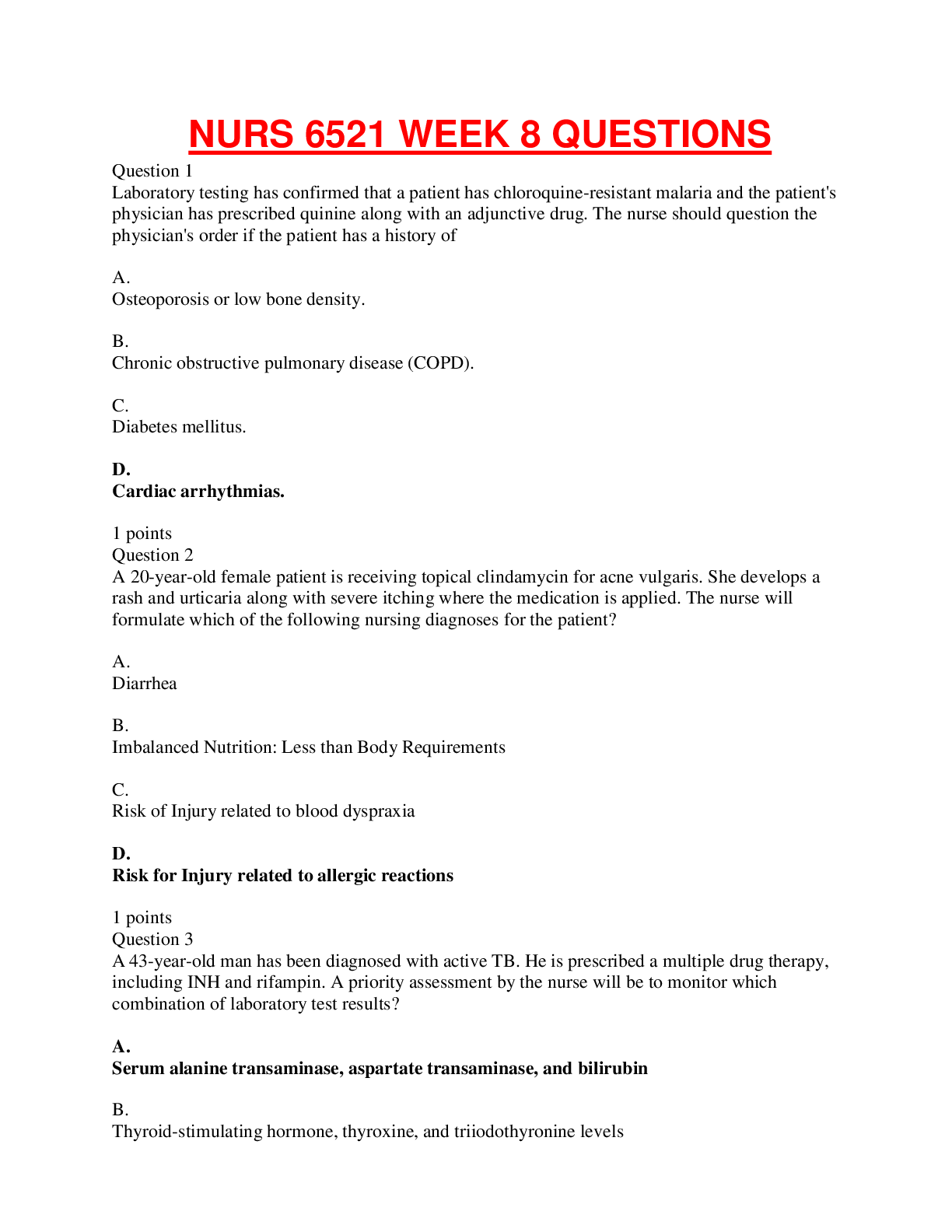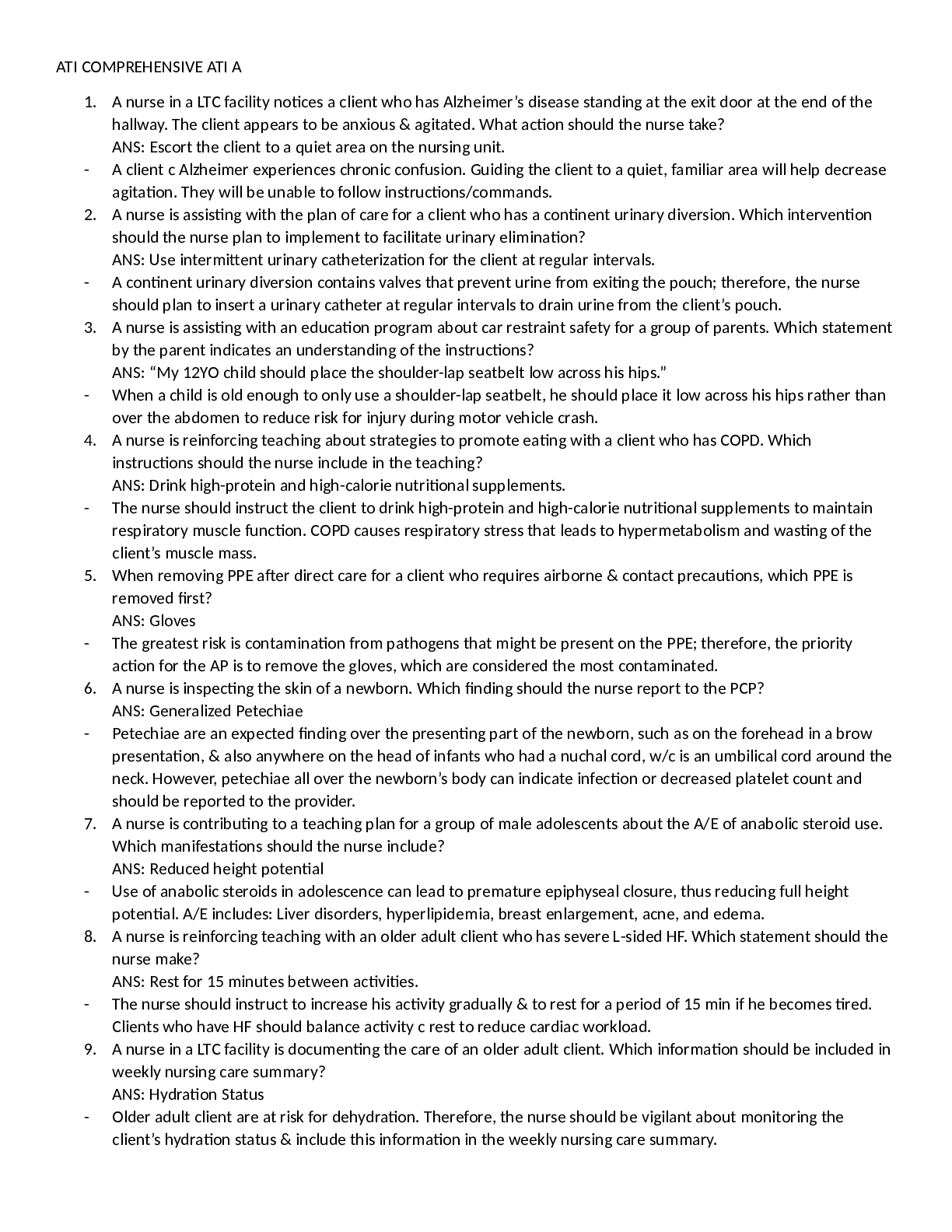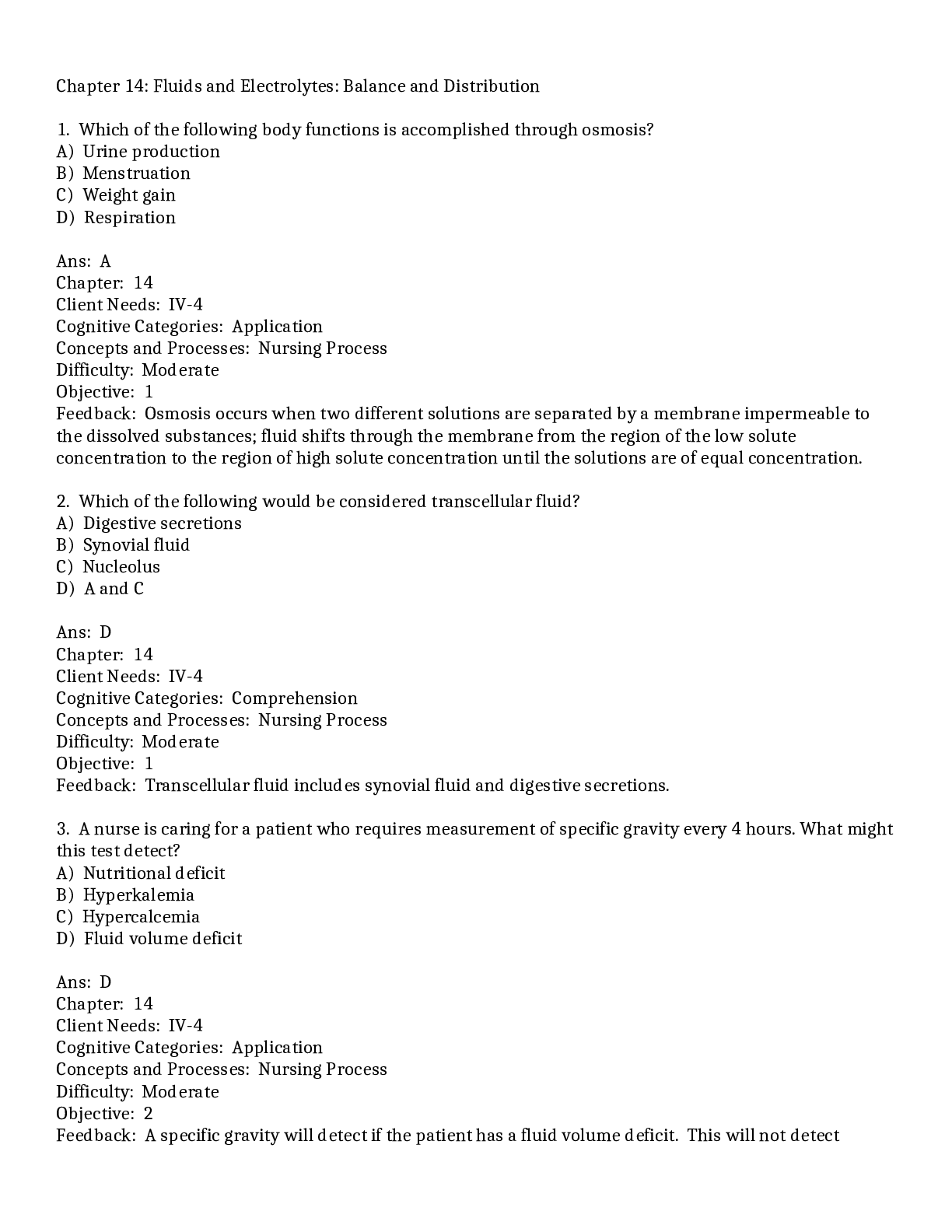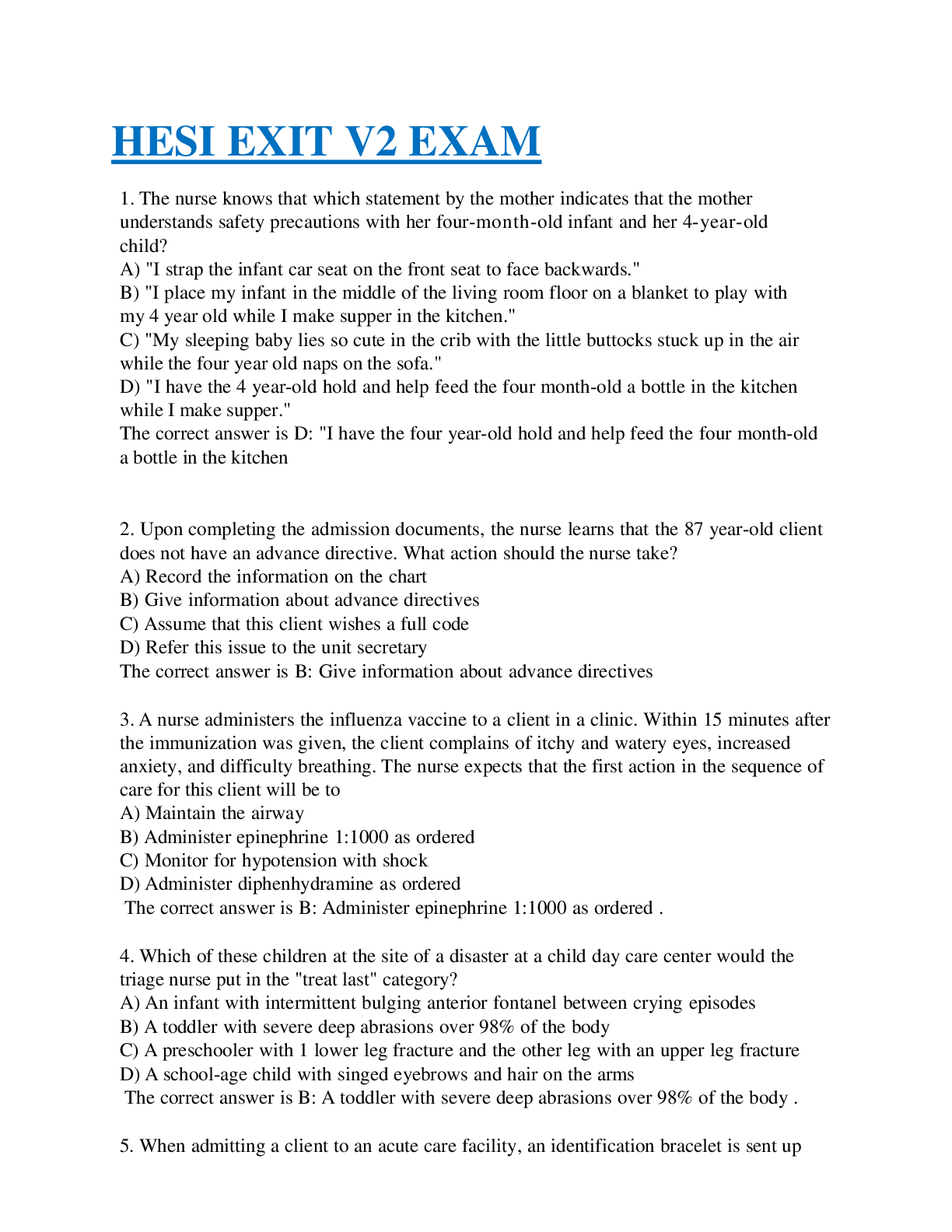*NURSING > EXAM > NURS 274 Fluids and Electrolytes medsurge 1 QUESTIONS AND ANSWERS (Graded A) (All)
NURS 274 Fluids and Electrolytes medsurge 1 QUESTIONS AND ANSWERS (Graded A)
Document Content and Description Below
The morning laboratory results of a patient admitted with heart failure reveal a serum potassium level of 2.9 mEq/L. Which classification of medications would be withheld until consulting with the... health care provider? 1 Antibiotics Correct2 Loop diuretics 3 Bronchodilators 4 Antihypertensives Loop diuretics are contraindicated during episodes of hypokalemia because these medications cause the kidneys to excrete sodium and potassium. Thus administration of this type of medication at this time would worsen the hypokalemia, putting the patient at risk for dysrhythmias. The prescribing health care provider should be consulted for potassium replacement therapy, and the drug should be withheld until the potassium has returned to normal range. Antibiotics, bronchodilators, and antihypertensives are not an issue in this case. 91%of students nationwide answered this question correctly. View Topics 2. 12686574086 Confidence: Nailed it Stats Issue with this question? 2. The IV prescription reads "1000 mL of D5.45 normal saline (NS) with 40 mEq KCl/L at 125 mL/hour." The nurse needs to add KCl to the liter of D5.45 NS solution because no premixed solutions are available. The unit's medication supply has a stock of KCl 5 mEq/mL in multidose vials. The nurse would need to draw up __________ mL of KCl to add to the IV solution. Record your answer using a whole number. The end concentration of the KCl is listed on the vial as follows: "5 mEq/mL." Using ratio and proportion, multiply 5 by x and multiply 40 × 1 to yield 5x = 40. Divide 40 by 5 to yield 8 mL. The nurse would add 8 mL of KCl to the 1000 mL of D5.45 NS. 67%of students nationwide answered this question correctly. View Topics 3. 12686498534 Confidence: Nailed it Stats Issue with this question? 3. Which process of molecule transport would occur when a patient develops pedal edema and their blood pressure is 160/90 mm Hg? Correct1 Osmosis 2 Diffusion 3 Active transport 4 Facilitated diffusion A patient with blood pressure of 160/90 mm Hg has hypertension and develops pedal edema due to excess sodium in the blood. This leads to movement of water down the gradient. Therefore the water from the blood vessels moves from higher concentrations to lower concentration across the semipermeable membrane with the help of osmotic pressure and leads to accumulation of water in the extracellular spaces. This movement of water across a semipermeable membrane to balance the solute is called osmosis. Diffusion and facilitated diffusion involve molecules moving from a higher to lower concentrations, and active transport involves molecules moving from a lower to higher concentration. [Show More]
Last updated: 2 years ago
Preview 1 out of 40 pages

Buy this document to get the full access instantly
Instant Download Access after purchase
Buy NowInstant download
We Accept:

Reviews( 0 )
$17.00
Can't find what you want? Try our AI powered Search
Document information
Connected school, study & course
About the document
Uploaded On
Oct 10, 2021
Number of pages
40
Written in
Additional information
This document has been written for:
Uploaded
Oct 10, 2021
Downloads
0
Views
88

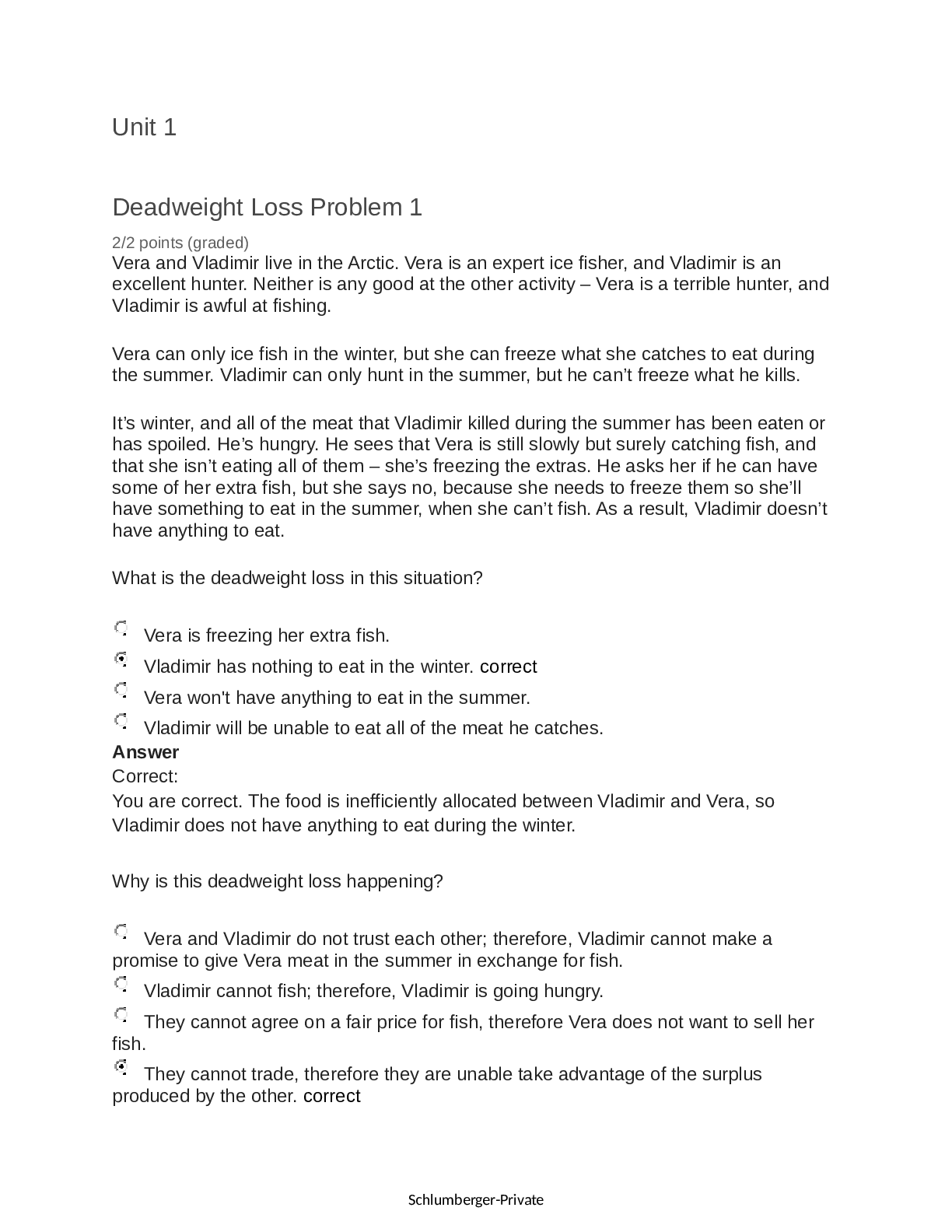
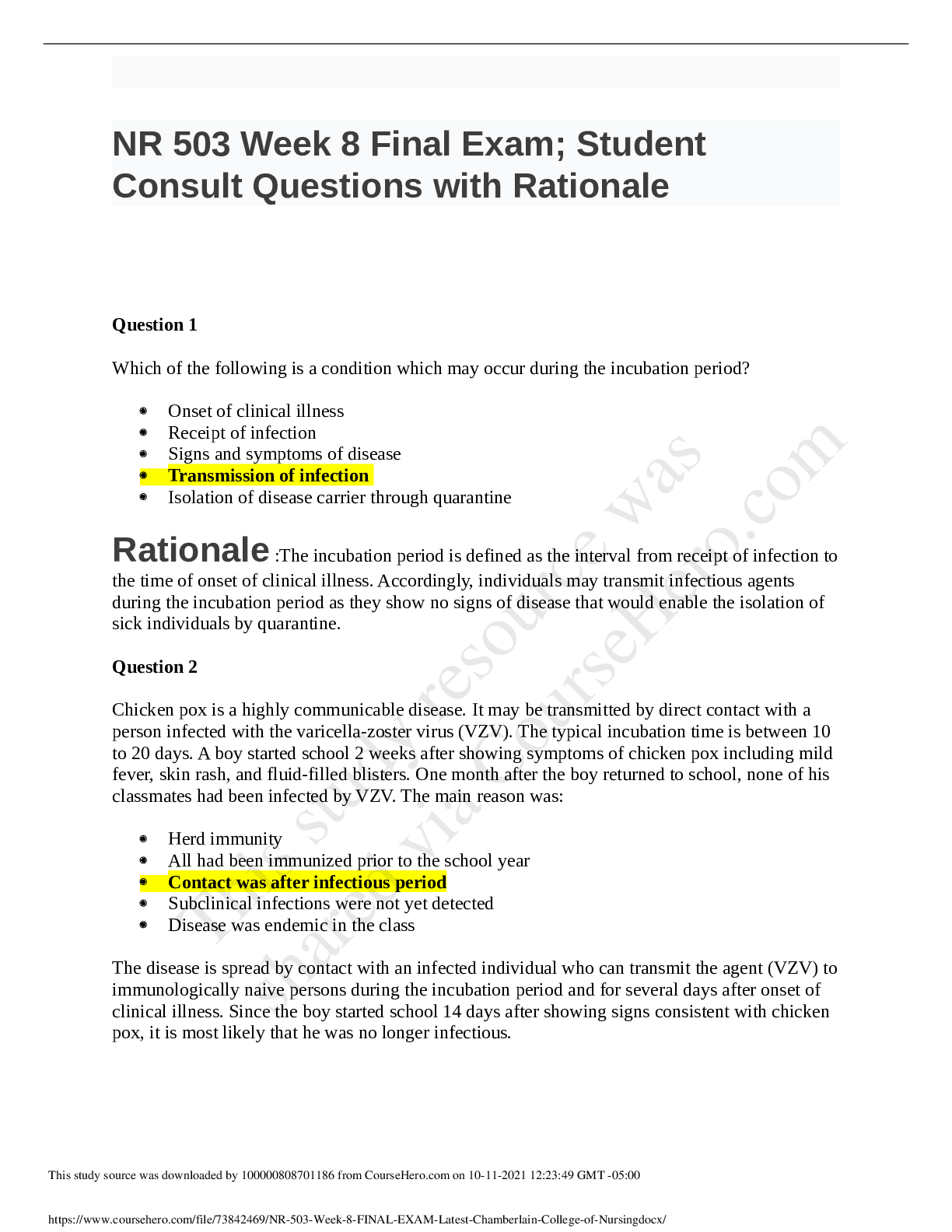
.png)


